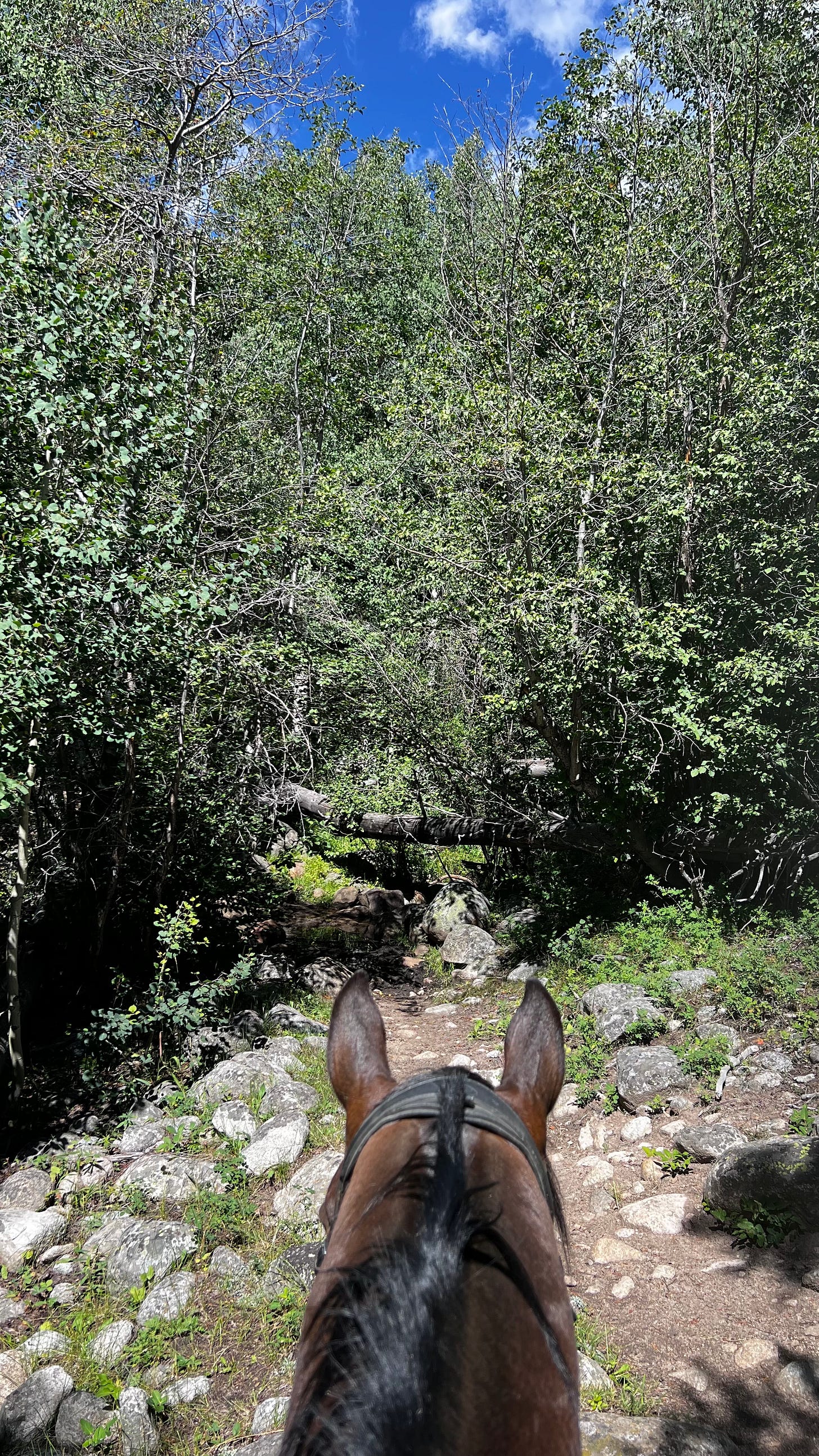
I’ve written extensively on building relationships with horses. Unfortunately, many people end up with troubled horses who have been raised/trained with far more negative training techniques. Trying to connect with those horses can be very difficult. Understanding what they’ve been through is the first step toward healing.
Learned helplessness is a state that occurs after a horse has experienced a stressful situation repeatedly. A horse comes to believe that he’s unable to control or change his circumstances, so he doesn’t try — even when opportunities for change become available.
Learned helplessness is characterized by demoralized and robotic behavior. Since this is what some people want from their horses, you can see how it would be considered a positive outcome of horse training by those people.
I think of learned helplessness as a form of mental prison, one that doesn’t tolerate any semblance of free thought or action.
Learned helplessness in horses often happens as a result of repeated traumatic events, overwhelmingly at the hands of humans. I’m not going to list examples of what those things can be, because I know you can think them up on your own. Anyone who’s been around horses can recall and relay instances of horse punishment and abuse meted out to horses by humans.

Traumatic practices of horse training are beginning to fade into obscurity in this age of understanding how to train horses without causing them heedless physical, mental, or emotional harm. Will some harm occur in the process of raising/training horses? Yes, as we are all flawed and prone to making mistakes. The key is to learn from those mistakes and correct them, thereby minimizing the harm we do. With enough positive experiences, we can override the few, small mistakes we make. This is the way to earn relationships with horses that can be tested.
We’ve all been in that place where we are frustrated with our horses’ behavior. What we must not do is give in to those frustrations by acting on them.
“Where knowledge ends, the beatings begin.”
If you find yourself giving way to anger and retaliation, step back and ask yourself what pieces of knowledge you may be missing that are causing the problem with which you are faced that leads you down the path of punishment or even abuse. What is needed is a more disciplined approach to training yourself first, then your horse. In my view, it is well worth the effort; the benefits are far-reaching and can be lifesaving.
Read here and here how you can better understand why horses do what they do.

Horses don’t understand punishment. Punishing horses leads to learned helplessness, as punishment will likely be repeated over and over in the absence of knowledge, skilled horsemanship, and experience.
When I refer to discipline, I’m referring to methods that don’t include either punishment or abuse. Discipline is the gateway to effective, efficient, and kindly interactions with horses. Discipline leads to learning and progressing toward a goal.
There are two definitions of discipline that apply here for both humans and horses:
A state of order based on submission (see my article on letting go) to rules and authority
Controlled behavior resulting from disciplinary training; self-control
When you look at those two definitions, you can see that one leads to another and back again, looping together to form a mutually beneficial route of conduct.
It has been said many times by many horsemen, that our horses act as a mirror for us. How we act and feel around horses goes right to the core of who we are and what shapes our behavior.
If we want to improve ourselves, we have only to spend time with our horses to identify our vulnerabilities, foibles, and failings. If we want to have a relationship with them, it’s up to us to become self-aware and take up the mantle of discipline in improving upon our shortcomings along the way.

“Enter by the narrow gate; for wide is the gate and broad is the way that leads to destruction, and there are many who go in by it. Because narrow is the gate and difficult is the way which leads to life, and few find it.”
Matthew 7:13–14
We all actively or passively choose the gates through which we pass in life, including the methods we use to raise and train our horses.
For more information about the amazing horses that have been and are being bred and raised on the HAAP farm, go to www.arabpinto.com
If you have questions for me about any of my posts, please feel free to contact me at isabellefarmer@gmail.com or visit our Facebook page at www.facebook.com/arabpintos


